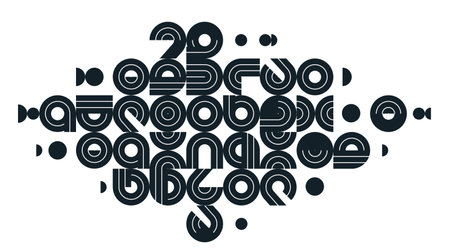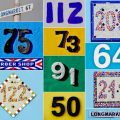Introduction to Hand Shape Interpretations in British Culture
Throughout the centuries, the interpretation of hand shapes has played a subtle yet intriguing role within the cultural tapestry of the British Isles. From ancient Celtic traditions to the Victorian fascination with palmistry, the British have long imbued hands with meaning beyond their physical function. This cultural practice is not merely a fringe curiosity; rather, it reflects deeper beliefs about character, fate, and social standing that have evolved alongside British society itself. By examining how hand shapes have been read and regarded from historical contexts to present-day attitudes, we gain insight into shifting values and enduring superstitions across England, Scotland, Wales, and Ireland. As both traditional folklore and modern scientific approaches continue to influence perceptions, understanding this evolution provides a nuanced perspective on how the British interpret identity and destiny through something as personal as the human hand.
Traditional Beliefs and Folklore Surrounding Hand Shapes
Throughout the British Isles, the interpretation of hand shapes has deep roots in local superstition, folklore, and traditional wisdom. For centuries, communities across England, Scotland, Wales, and Ireland have looked to the hands not only as tools for work but also as mirrors reflecting one’s character, destiny, and fortune. This systematic exploration reveals how these beliefs were woven into daily life and cultural identity.
Hand Shapes in Regional Folklore
Across different regions, distinct hand shapes were linked to specific traits or fates. For example, long-fingered hands were often seen as a sign of intelligence and creativity in Welsh folk tales, while broad palms were associated with strength and reliability in rural English communities. In some Scottish traditions, the presence of a “Simian Line” (a single transverse palmar crease) was believed to mark someone destined for unusual experiences or spiritual insight.
| Region | Hand Shape | Associated Meaning |
|---|---|---|
| England (Midlands) | Square Palm | Practicality, Honesty |
| Wales | Long Fingers | Cleverness, Artistic Talent |
| Scotland (Highlands) | Simian Line | Mysticism, Uniqueness |
| Ireland (West) | Short Fingers | Loyalty, Grounded Nature |
The Role of Hand Reading in Fortune-Telling
Palmistry—known locally as “cheiromancy”—became an established part of fairs and village gatherings. Local fortune-tellers would interpret the mounts and lines on the palm to predict marriage prospects, financial success, or even health outcomes. The shape of the hand itself was frequently the starting point of these readings, offering clues about innate temperament before delving into finer details.
Character Assessment Through Hand Types
The British tradition categorised hands into types—such as the “Elemental,” “Square,” “Spatulate,” and “Conic”—each purportedly corresponding to personality archetypes. For example:
| Hand Type | Description | Traditional Character Traits |
|---|---|---|
| Elemental | Large palm, short fingers | Straightforward, Strong-willed |
| Square | Square palm and fingers | Diligent, Reliable |
| Spatulate | Broad at finger tips | Inventive, Energetic |
| Conic | Tapering fingers and palm | Sensitive, Adaptable |
The Cultural Legacy of Traditional Beliefs
While modern perspectives may view these interpretations as quaint or unscientific, their historical influence endures in language (“a firm handshake”), customs (reading palms at fêtes), and popular literature. Ultimately, traditional beliefs about hand shapes provided a framework for understanding individuality and destiny within the close-knit communities of the British Isles.

3. Modern Scientific and Psychological Perspectives
In contrast to the folklore and traditional beliefs surrounding hand shapes across the British Isles, contemporary interpretations are grounded in scientific inquiry and psychological analysis. Modern research approaches the study of hand shapes through genetics, biomechanics, and psychological profiling rather than symbolism or superstition. Academic studies have examined the correlation between finger length ratios—most notably the 2D:4D ratio—and various biological factors such as prenatal hormone exposure, athletic potential, and even predispositions towards certain health conditions. This empirical focus has largely replaced earlier narratives that linked hand shape with character or destiny.
From a psychological perspective, hand shape analysis is occasionally used within occupational psychology and career counselling, albeit with considerable caution. Here, it is treated as one of many biometric markers that might suggest tendencies in cognitive style or motor skills, rather than definitive indicators of personality or fate. Such applications are always couched in probabilistic language, reflecting a broader scepticism towards determinism in modern British culture. The reliance on peer-reviewed evidence and statistical validation further differentiates these perspectives from the anecdotal traditions of earlier eras.
Importantly, contemporary discourse in the UK tends to be critical of pseudoscience and wary of any claims lacking robust methodological support. This attitude is reflected in public debates, media coverage, and educational materials relating to palmistry and other forms of physiognomy. While some Britons may still enjoy hand reading at fairs or as light entertainment, there is a widespread consensus that modern science offers a more reliable framework for understanding human variation than inherited myths or cultural lore. Thus, present-day attitudes in the British Isles favour an evidence-based approach that both acknowledges historical narratives and subjects them to rigorous scrutiny.
4. Societal and Cultural Shifts in Interpretation
Over recent decades, the interpretation of hand shapes in the British Isles has undergone substantial transformation, prompted by evolving social attitudes, rapid technological development, and a growing openness to global perspectives. These influences have collectively redefined how hand shapes are perceived, moving away from rigid traditional beliefs toward more nuanced, inclusive, and scientifically informed understandings.
Changing Social Attitudes
Modern British society is characterised by increased emphasis on individuality, diversity, and inclusivity. Where once hand shape analysis was often linked to fixed notions of destiny or character—sometimes reinforcing social hierarchies or stereotypes—contemporary interpretations tend to be approached with scepticism or curiosity rather than dogmatic belief. The rise of secularism and critical thinking encourages people to view palmistry and related practices as cultural curiosities rather than absolute truths.
Impact of Technological Advances
The digital revolution has introduced new ways of sharing and scrutinising information about hand shapes. Online platforms allow for the rapid dissemination of both scientific studies and anecdotal interpretations. Technology also enables biometric analysis for security and health applications, shifting the focus from mystical predictions to practical uses such as identification or medical diagnostics. This shift is particularly noticeable in public discourse, where evidence-based approaches are increasingly valued.
Exposure to Global Perspectives
The British Isles have become more culturally diverse due to increased travel, migration, and digital connectivity. Exposure to alternative traditions from Europe, Asia, Africa, and the Americas has broadened the range of interpretations surrounding hand shapes. For example, Western palmistry is now frequently compared with Chinese or Indian systems, leading to hybrid practices or cross-cultural dialogue that further diminishes the authority of any single tradition.
Summary Table: Influences on Hand Shape Interpretation
| Factor | Traditional Era | Modern Era |
|---|---|---|
| Social Attitudes | Deterministic; linked to class/gender roles | Individualistic; inclusive; sceptical |
| Technological Influence | Minimal; oral/written transmission | Digital sharing; biometric science |
| Global Perspectives | Insular; localised traditions dominate | Culturally diverse; hybrid interpretations |
The Ongoing Evolution of Meaning
Taken together, these societal and cultural shifts illustrate that the meaning attached to hand shapes in the British Isles is not static. Instead, it is continually negotiated amid changing values, technologies, and international influences. As a result, interpretations today are far more varied and dynamic than in any previous era.
5. Comparative Analysis: Tradition versus Modernity
Systematic Differences in Approach and Interpretation
When examining the traditional and modern interpretations of hand shapes within the British Isles, it is essential to delineate the contrasting frameworks that underpin each perspective. Traditional interpretations, often rooted in folklore and historical customs, typically view hand shapes as indicators of destiny, character, or even social standing. These readings are based on long-standing beliefs, oral histories, and sometimes superstitions passed down through generations. Modern interpretations, however, tend to approach hand analysis from a more empirical or psychological standpoint, utilising contemporary scientific research and cultural shifts to inform meaning. The focus shifts away from fate towards personality traits, cognitive styles, and individual uniqueness.
Key Differences: Foundation and Function
The foundational difference lies in the methodology: traditional interpretations emphasise communal wisdom and mystical symbolism—such as associating certain finger lengths with luck or leadership—whereas modern approaches rely on observable data and psychological profiling. For example, where tradition might see a broad palm as a sign of generosity due to an old regional tale, modern analysts may link it to assertiveness based on behavioural studies. Additionally, traditional readings often have a prescriptive tone, suggesting what someone should become; modern readings are more descriptive, focusing on who someone is.
Surprising Similarities: Enduring Themes Across Time
Despite these differences, there are striking similarities that persist across both paradigms. Both traditional and modern systems recognise that hands can serve as a map to personal identity—whether through myth or measurable trait. In fact, some motifs such as the association between flexibility in fingers and adaptability in character remain largely unchanged over time. Both approaches also serve social functions: they offer individuals insight into themselves and provide a language for discussing differences within communities throughout the British Isles.
Cultural Relevance: A Continuum Rather Than a Divide
Ultimately, comparing these perspectives reveals not an outright replacement of tradition by modernity but rather an ongoing dialogue between them. Many contemporary Britons draw upon both old customs and new research when considering hand shapes—a testament to the enduring relevance of this practice. The interplay between tradition and innovation enriches cultural identity while ensuring that interpretations of hand shapes remain meaningful in both historical and contemporary contexts.
6. Conclusion: The Evolving Role of Hand Shape Interpretations
The dynamic relationship between tradition and modernity continues to shape the way hand shapes are interpreted in the British Isles. Historically, hand shapes have been imbued with cultural significance—serving as markers of heritage, social class, and even destiny through practices such as palmistry and folk beliefs. In recent decades, however, these traditional interpretations have encountered a wave of modern perspectives influenced by scientific research, technology, and shifting social values.
Modern interpretations often draw on genetics, psychology, and ergonomics to understand hand shapes, moving away from symbolic meanings towards evidence-based explanations. This shift does not necessarily negate tradition but rather places it within a broader context, inviting critical reflection and dialogue. For instance, while some may still find personal or communal meaning in old customs, others appreciate hand shape analysis as a tool for self-understanding or health assessment.
The coexistence of old and new approaches highlights the adaptive nature of British society. Communities across England, Scotland, Wales, and Northern Ireland are increasingly open to integrating ancestral wisdom with contemporary science. This interplay fosters a richer understanding of identity, belonging, and human variation. It also demonstrates how cultural practices can evolve without losing their essence—respecting the past while embracing innovation.
Looking forward, the future of hand shape interpretation in Britain is likely to remain pluralistic. As digital technology makes biometric data more accessible and as interest in ancestry grows alongside scientific literacy, individuals will continue to navigate the space between inherited traditions and emerging knowledge. This ongoing negotiation underscores the enduring relevance of hand shapes—not just as physical features but as symbols of continuity and change within British culture.

